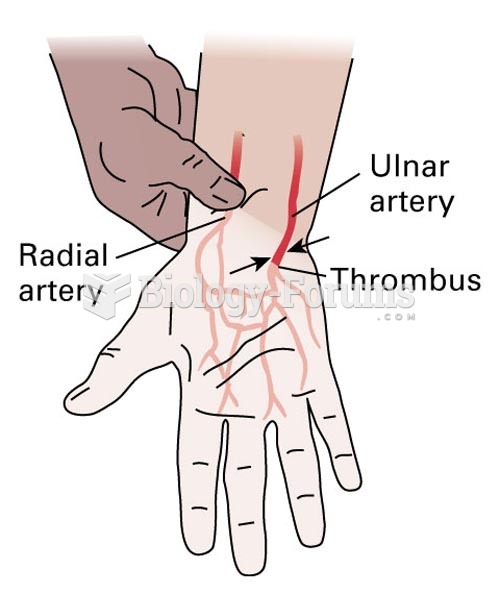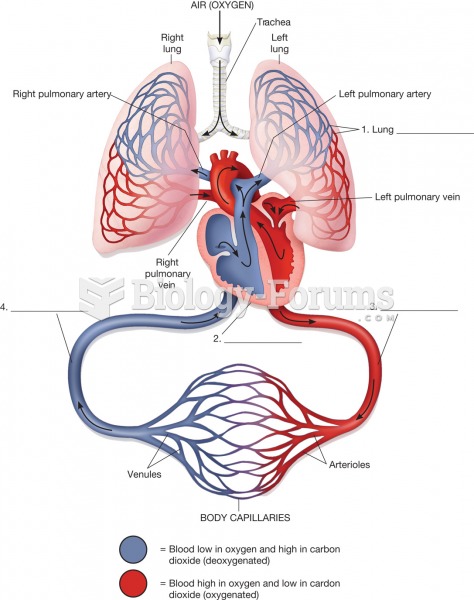|
|
|
In ancient Rome, many of the richer people in the population had lead-induced gout. The reason for this is unclear. Lead poisoning has also been linked to madness.
As the western states of America were settled, pioneers often had to drink rancid water from ponds and other sources. This often resulted in chronic diarrhea, causing many cases of dehydration and death that could have been avoided if clean water had been available.
HIV testing reach is still limited. An estimated 40% of people with HIV (more than 14 million) remain undiagnosed and do not know their infection status.
Drug-induced pharmacodynamic effects manifested in older adults include drug-induced renal toxicity, which can be a major factor when these adults are experiencing other kidney problems.
Atropine was named after the Greek goddess Atropos, the oldest and ugliest of the three sisters known as the Fates, who controlled the destiny of men.
 Allen Test: An occluded ulnar artery results in continued pallor of the hand while the radial artery
Allen Test: An occluded ulnar artery results in continued pallor of the hand while the radial artery
 The cardiovascular system. A schematic view of the closed circulation of blood. The heart is section
The cardiovascular system. A schematic view of the closed circulation of blood. The heart is section





